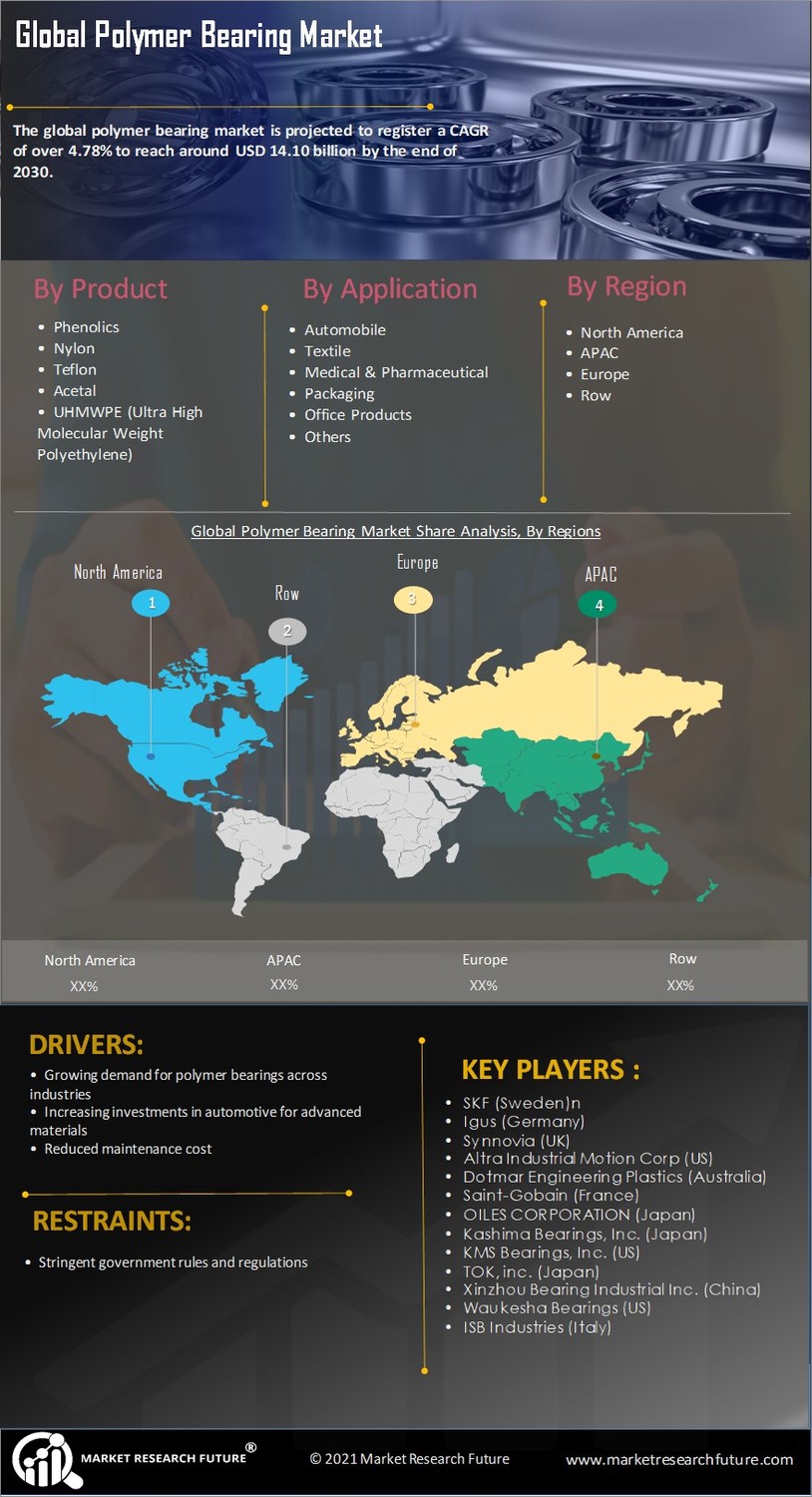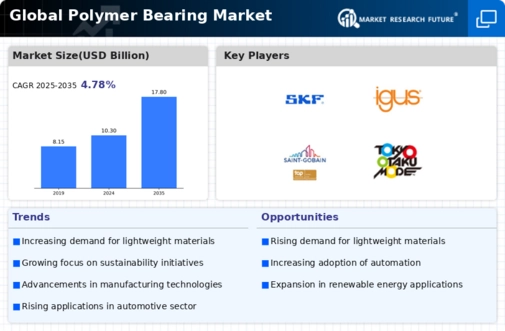Market Growth Projections
The Global Polymer Bearing Market Industry is projected to experience substantial growth over the next decade. With a market value of 10.3 USD Billion in 2024, it is anticipated to reach 17.8 USD Billion by 2035, reflecting a compound annual growth rate of 5.11% from 2025 to 2035. This growth is driven by various factors, including technological advancements, increasing applications across industries, and a focus on sustainability. As the market evolves, it is likely to attract further investment and innovation, positioning polymer bearings as a key component in modern manufacturing processes.
Rising Demand for Lightweight Materials
The Global Polymer Bearing Market Industry experiences a surge in demand for lightweight materials across various sectors, including automotive and aerospace. As manufacturers seek to enhance fuel efficiency and reduce emissions, polymer bearings, known for their lightweight properties, become increasingly attractive. In 2024, the market is projected to reach 10.3 USD Billion, driven by the automotive industry's shift towards electric vehicles, which often utilize polymer bearings to minimize weight. This trend suggests that the Global Polymer Bearing Market Industry may continue to expand as companies prioritize sustainability and performance, potentially leading to a compound annual growth rate of 5.11% from 2025 to 2035.
Growing Applications in Various Industries
The Global Polymer Bearing Market Industry is witnessing an expansion in applications across diverse sectors, including food processing, pharmaceuticals, and renewable energy. Polymer bearings are favored in these industries due to their corrosion resistance and low friction properties, which enhance operational efficiency. For instance, in the food processing sector, the use of polymer bearings in conveyor systems ensures hygiene and reduces maintenance costs. As industries increasingly recognize the benefits of polymer bearings, the market is poised for growth, potentially reaching 17.8 USD Billion by 2035. This diversification of applications underscores the versatility of polymer bearings and their critical role in modern manufacturing.
Technological Advancements in Manufacturing
Technological advancements in manufacturing processes significantly influence the Global Polymer Bearing Market Industry. Innovations such as 3D printing and advanced polymer formulations enhance the performance and durability of polymer bearings. These advancements allow for the production of bearings that can withstand higher loads and temperatures, making them suitable for a broader range of applications. As industries increasingly adopt these technologies, the market is likely to benefit from improved product offerings and reduced production costs. This evolution could contribute to the market's growth trajectory, with projections indicating a rise to 17.8 USD Billion by 2035, reflecting the industry's adaptability and forward-thinking approach.
Environmental Regulations and Sustainability
Increasing environmental regulations and a global push towards sustainability significantly impact the Global Polymer Bearing Market Industry. Governments worldwide are implementing stricter regulations on emissions and waste, prompting industries to adopt eco-friendly materials. Polymer bearings, often made from recyclable materials, align with these sustainability goals, making them an attractive option for manufacturers. This shift not only helps companies comply with regulations but also enhances their brand image. As a result, the market is likely to experience robust growth, with projections indicating a rise to 10.3 USD Billion in 2024. The emphasis on sustainability suggests that the Global Polymer Bearing Market Industry will continue to evolve in response to regulatory pressures.
Increased Investment in Research and Development
The Global Polymer Bearing Market Industry benefits from increased investment in research and development, which fosters innovation and enhances product offerings. Companies are allocating resources to develop advanced polymer materials and improve bearing designs, resulting in products that offer superior performance and longevity. This focus on R&D is crucial as industries demand more efficient and durable solutions. As a result, the market is expected to grow, with forecasts suggesting a rise to 17.8 USD Billion by 2035. The commitment to innovation indicates that the Global Polymer Bearing Market Industry is well-positioned to meet the evolving needs of various sectors, ensuring its relevance in the future.















Leave a Comment